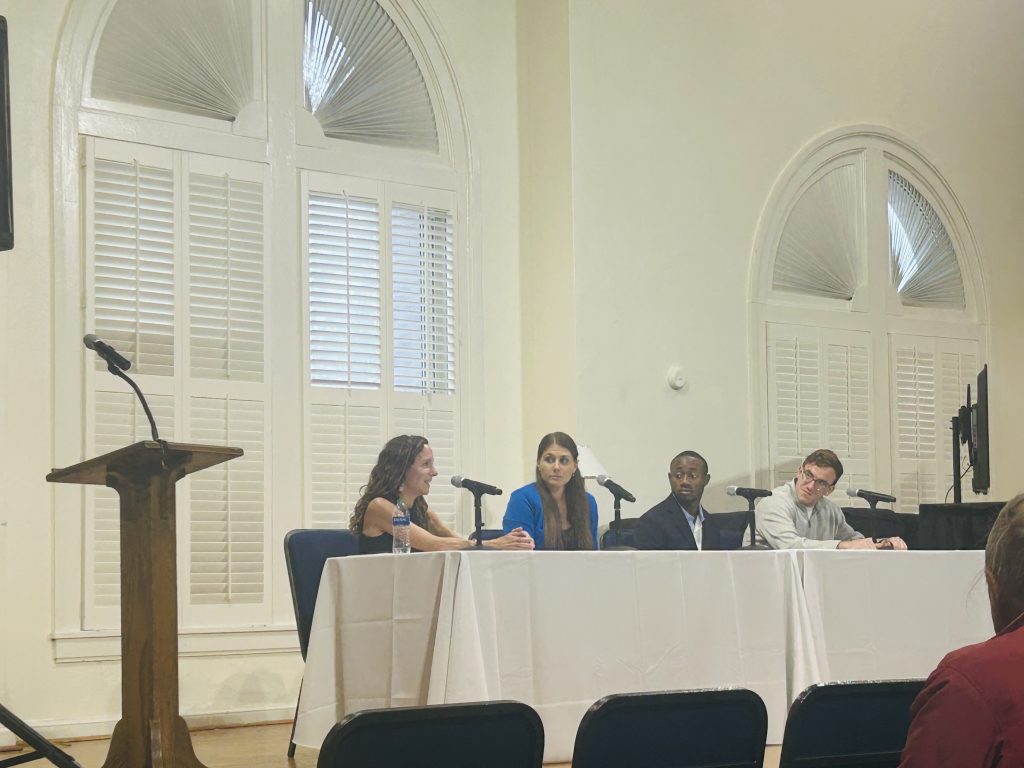The furious ones are dripping onto the hardwood floors. The blue seas devour the stands. Anyone who has ever attended, or even heard of the legendary Duke Vs UNC basketball game, probably has a vivid picture of the intense nature of that game.
While there is no doubt that this multi-million dollar event is the most beneficial of the year for both programs, a recent collaboration between faculty from both schools has raised the question: Beneficial for whom?
Friday November 10, I had the pleasure of attending a sports conference organized by Duke and UNC emphasizing the exploitative nature of collegiate athletics. Duke hosted, but both schools brought together a host of professors, lawyers and media professionals to discuss a wide range of topics regarding the relationship between college sports and their detrimental effects on athletes. Despite the immense diversity of topics, a common consensus emerged among all speakers and participants at the event: some things need to change.

Panelists (left to right) Victoria Jackson, Maddie Salamone, Olu Kopano and Payton Barish.
According to them, the world of college sports currently suffers from three major problems: lack of representation, lack of long-term benefits and, most importantly, the illusion of success given to these athletes.
Among athletes, the lack of representation in decision-making spheres appears to be a two-sided problem. Any solution seems unlikely without major structural changes.
There are a number of decision-making bodies responsible for dealing with sporting matters and decisions. One of the most notable is that of the NCAA. Student-Athlete Advisory Committee (SAAC), a representative body created with the aim of giving athletes a voice. However, its limited scope, athletes’ lack of knowledge on certain issues, and lack of authority given to athletes’ decisions highlight the conference’s inability to serve as an adequate representative body.
Many attribute this lack of representation to the fact that athletes are overextended, depriving them of the time needed to truly understand the expectations of the rules set by the NCAA. Symposium speakers argued that time and resources must be integrated into their schedules, not used as an additional burden, to give them more clarity about their rights, structural changes and power shifts that affect them. affect.
Panelists also said many athletes come out of college without developing fundamental skills such as the ability to do their own tax returns. Many cannot afford to properly manage injuries sustained in college because they do not have long-term or lifelong health services. And many international athletes are not equipped to deal with the visa issues this may result from an inability to manage not only the expectations set by their sport, but also those set by their schools, and even the ICE.
A common thread throughout the symposium was that there is a lot of staff present for the development of the game, but little staff for the development of the athletes as individuals.
This idea formed the second consensus of the discussion: there needs to be a more intentional focus on resources for athletes, not only based on sport performance, but also in the context of mental, physical and long-term health in all the domains.
Finally, the illusion of success offered to athletes was a major grievance expressed during the conference. When recruiting athletes to the team, it is customary for recruiters to essentially promise them an idea of their future success, whether by turning professional or gaining financial release. However, it turned out that this was not the case for everyone, as most careers end after those four years of college. This idea is detrimental to athletes whose intense dedication and narrow vision toward these goals often prevents them from developing a plan B. Many become susceptible to difficulty recovering, fueled by a lack of resources and representation .
If athletes can now receive compensation for their “names, images and likenesses” (NIL), it’s still breadcrumbs compared to amount paid to coaches and staff. This illusion is fueled by purses and third-party sponsorships that allow parties currently bringing in millions of dollars in salaries to undercompensate the source of those revenues: the athletes themselves. Many people at the symposium concluded that this was a task for athletes to solve, while others said it was a problem for coaches, recruiters and universities to solve. Both parties agreed, however, that this change must happen immediately, otherwise these issues will continue to harm many other athletes in the long term.

Coordinator and panelists (left to right): Tracie Canada, Javier Wallace, Nathan Kalman-Lamb and Erianne Weight.
The symposium was a wonderfully unifying event that started a conversation about addressing the harmful effects and structural disadvantages faced by collegiate athletes. It shows how athletes have spent years supporting a system that does not fully meet their needs.
Victoria Jackson, a historian and former Arizona State University long-distance runner, called efforts to end these disparities a “courageous act.” However, if the two major rival schools can put aside their decades-long competition in an effort to improve the lives of their athletes, then change in this area is completely understandable for athletes everywhere.

Keynote speaker, Dr. Victoria Jackson of Arizona State University, during her opening statements.

By Gabrielle Douglas, Class of 2027

